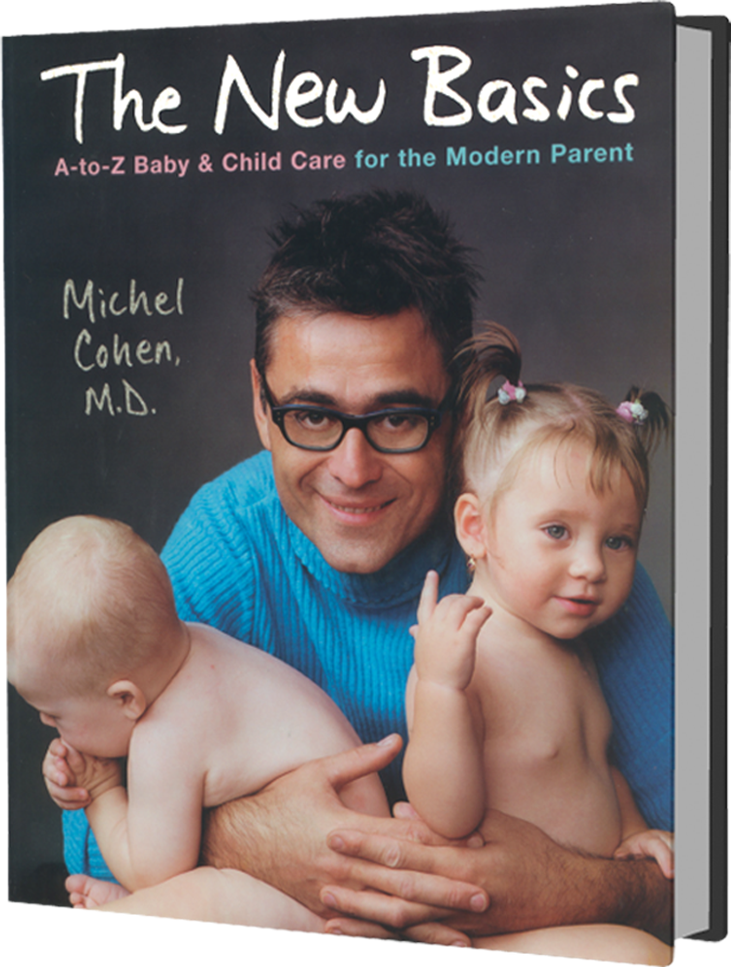
Air Travel
Ear Pressure
“The captain has just turned on the breast-feeding sign.”
There are many myths about flying with a baby. For example, some parents believe that the change in cabin pressure will cause Lucy terrible ear pain and make her ears “pop” unless you diligently keep a nipple in her mouth during takeoff and landing. Put simply, this is not true. For starters, cabin pressure is no longer the issue it was some twenty years ago; these days, computers control cabin conditions, and problems are rare. For minor changes, Lucy will just swallow her saliva and relieve the pressure without your assistance. If a little pressure builds up anyway, crying will open her eustachian tubes and relieve it. Therefore, if she’s sleeping during altitude changes, you don’t need to wake her up for “sucking,” as some books suggest. Think of how you deal with your own pressure buildup: You yawn and yawn, almost to the point of dislocating your jaw, to equalize the pressure, with only moderate success. So if indeed a little pressure builds up in her ears, a few gulps on a nipple probably won’t do the job. On the other hand, if she’s awake and up for it, nursing at takeoff and landing could be a good way to distract both of you and “depressurize” her.
Flying and Crying
When you show up at the counter with a baby, the other passengers all start wondering if they’ll have to sit next to you. As you know, babies can exhibit all kinds of bad behaviors that are only magnified by the cramped space of a commercial jetliner. If Lucy cries during the flight, just as she would at home, you’re going to get some serious looks from the people sitting around you. Unfortunately, apart from gently rocking and feeding her if she’s hungry, there isn’t much you can or should do. Be aware that whether you’re in-flight or at home, overfeeding and over-rocking can worsen the crying. When nothing you do makes a difference, you have no options left; just let Lucy exhaust herself to sleep. As for the other passengers. . . aren’t the headsets free these days?
When Can Babies Fly?
As soon as you can tolerate sitting for the duration of the flight. Sure, crowded places like airplane cabins carry an increased risk of colds and flu, but so does a kiss from grandma or an older sibling, and they’ll come much closer to Lucy than your fellow air passengers will. Contrary to popular belief, Lucy can travel without all her immunizations and can even be exposed to the outside world. For the most part, the illnesses against which we commonly immunize have already been eradicated, thanks to the effectiveness of these vaccines.
Flying with Ear Infections
If Jimmy has recently been diagnosed with an ear infection, don’t automatically cancel your flight plans. Most ear infections are mild and short-lived. Just bring along some pain medication in case he experiences discomfort. Even the worst-case scenario, in which the eardrum bursts, is often misunderstood. It’s only a remote possibility, and it can happen on the ground as well as in the air. And no matter where it happens, it’s not cataclysmic; in the vast majority of cases, it heals perfectly [See: Ear Infections].
Flying and Sleeping Aids
Nothing short of a heavy-duty sleeping pill will knock Jimmy out for five or six hours straight. Decongestants such as Benadryl may induce drowsiness, but their soporific action is temporary. To top it off, these medications can have an unexpected reverse effect, in which case you’ll have to put up with a child who’s bouncing around as if he’s personally responsible for creating turbulence. Bring lots of toys instead; distraction is far better than drugs.
Flying and Car Seats
They give you the advantage of not having to hold Lucy for the whole flight, but they’re cumbersome and require an extra seat, which could be pricey. In terms of safety during turbulence, holding Lucy in your arms is probably just as safe as a car seat (as long as your own seat belt is securely fastened, snug and low).




 MEDICATION DOSAGE
MEDICATION DOSAGE

